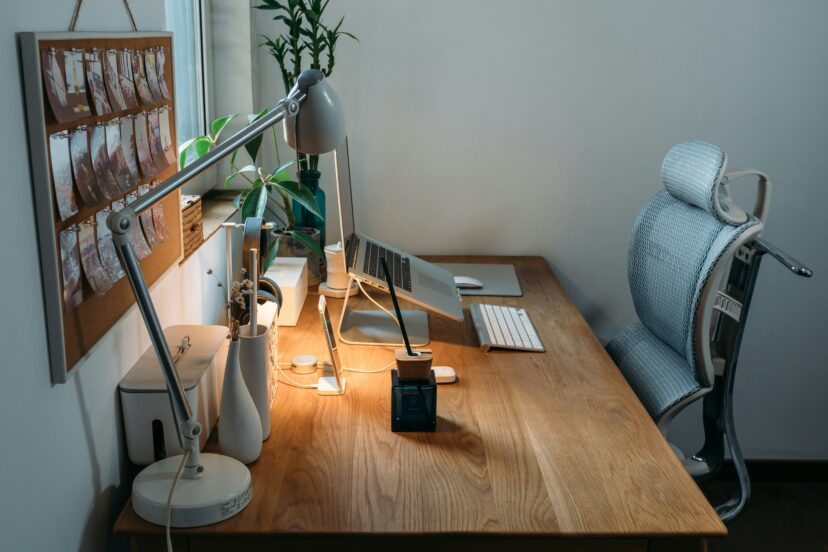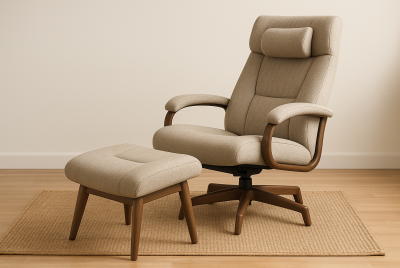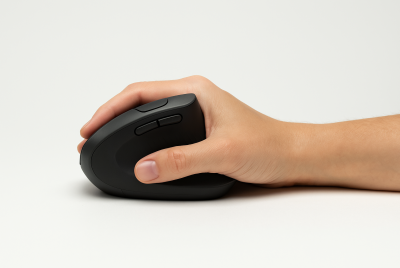Ergonomic Home Makeover Ideas: Little Changes That Make A Big Impact
We may earn a commission for purchases made using our links. Please see our disclosure to learn more.
Are you constantly dealing with back pain, neck stiffness, or fatigue after spending hours at home—whether working, relaxing, or even sleeping? That’s because your living space might not be supporting your body the way it should. With poor posture, awkward screen setups, and unsupportive furniture, your home could be silently contributing to daily discomfort and long-term health issues. But here’s the good news: an ergonomic home makeover can change everything. By making small, strategic adjustments—like adding lumbar support, elevating your monitor, or improving lighting—you can transform your space into one that promotes comfort, energy, and overall well-being.
What Is an Ergonomic Home Makeover?
Making changes to your surroundings that promote your body’s natural posture, movement, and comfort is known as an ergonomic home makeover. The objective? to maximize functionality while reducing physical strain.
Your bed, workstation, kitchen, and even the lighting all have an impact on how your body feels at the end of the day. Today, ergonomics is about how every area of your house improves your well-being, not just workplace chairs and keyboard trays.
Why It Matters: Ergonomics and Long-Term Health
You might not think that slouching on your couch or bending to reach pots in the kitchen has consequences—but over time, these repetitive strains add up.
Poor ergonomics can lead to:
- Chronic neck, shoulder, and back pain
- Eye fatigue and headaches
- Joint stiffness or repetitive strain injuries
- Low energy and reduced focus
By investing in an ergonomic home, you’re investing in long-term physical and mental health. And in today’s work-from-home and screen-heavy world, that’s more important than ever.

Start Small: Simple Ergonomic Upgrades That Work
1. Correct Your Sitting Posture with Better Seating
Let’s start where most of us spend the day—sitting. Whether it’s on a couch, at a dining table, or in a home office chair, prolonged sitting in the wrong position contributes to spine misalignment, hip tightness, and poor circulation.
Upgrade ideas:
- Ergonomic seat cushions or lumbar rolls
- Chairs with adjustable height and tilt
- Footrests to relieve pressure from your lower back
Tip: Your knees should be level with or slightly lower than your hips when seated. Make sure your feet are placed flat on the ground or comfortably supported by a footrest.
2. Optimize Screen Position and Desk Setup
For anyone with a computer station, screen height is crucial. A monitor that’s too low causes neck strain. Overly high chairs cause feet to hang. Small errors in alignment can cause major discomfort.
Make these changes:
- Use a monitor riser or adjustable arm
- Position screen at eye level, arm’s length away
- Keep elbows at a 90-degree angle when typing
- Use an external keyboard and mouse if using a laptop
These changes not only relieve neck and shoulder tension but also enhance your focus and reduce eye strain—especially when working long hours.
3. Add Movement with Standing and Active Elements
Your body wasn’t designed to sit for hours at a time. Adding standing options and encouraging micro-movements throughout the day improves circulation, energy, and posture.
Try these additions:
- Sit-stand desk converters
- Anti-fatigue floor mats for kitchen or office
- Balance stools or wobble cushions for dynamic sitting
The goal here is not to stand all day—but to alternate frequently between sitting and standing. Listen to your body, and shift positions often.
4. Improve Lighting for Eye and Mood Health
Good lighting is a hidden ergonomic hero. Poor lighting causes you to lean in, squint, or crane your neck—all of which contribute to long-term strain.
Lighting improvements include:
- Adjustable LED desk lamps with color temperature control
- Natural lighting near workstations and reading areas
- Ambient lighting to reduce screen glare in living spaces
Pro tip: Use warm light in the evening to help your body wind down, and cool light during the day to stay alert and focused.
5. Support Sleep With the Right Bedding
Your bedroom is where true recovery happens. An ergonomic home makeover should absolutely include your bed setup, because the way you sleep affects how you feel all day long.
Key elements:
- Medium-firm mattress for spinal alignment
- Memory foam or adjustable pillows that suit your sleeping position
- Adjustable bed frames or wedge pillows to reduce snoring and acid reflux
Did you know? Sleeping with a pillow between your knees (side sleepers) or under them (back sleepers) can help reduce lower back pain.
Best Amazon Products for an Ergonomic Home Makeover
Here are top-rated ergonomic items that are easy to add to your home and can drastically improve comfort:
| Product | Why It’s Great |
| Everlasting Comfort Seat Cushion | Supports tailbone and relieves pressure from long sitting hours |
| HUANUO Adjustable Monitor Stand | Elevates screen height to improve posture and reduce neck strain |
| VIVO Standing Desk Converter | Affordable sit-stand option for any desk |
| Honeywell Sunturalux™ LED Desk Lamp | Reduces eye strain with adjustable brightness and color temperature |
| Memory Foam Pillow | Adjustable for any sleeping position; promotes spinal alignment |
Research-Backed Benefits of Ergonomic Workspaces
Scientific research strongly supports the health benefits of ergonomic improvements. One controlled trial on office ergonomics training found that targeted interventions significantly reduced neck, shoulder, and back pain while enhancing overall well-being and comfort at work.
Similarly, a randomized study on sit–stand desk interventions showed that reducing sitting time not only eased musculoskeletal discomfort but also improved vitality and self-rated productivity. Together, these studies highlight how thoughtful ergonomic upgrades can lead to better physical health and day-to-day performance.
Room-by-Room Ergonomic Ideas
Living Room
- Use lumbar pillows on sofas
- Add adjustable-height coffee tables
- Keep remotes and essentials within arm’s reach
Kitchen
- Place often-used tools and ingredients at waist level
- Install pull-out drawers or lazy Susans to reduce bending
- Use cushioned mats for prolonged standing at counters
Bedroom
- Opt for nightstands at mattress height
- Use a pillow suited to your sleep posture
- Declutter the space for stress reduction
Home Office
- Invest in an ergonomic chair with lumbar support
- Use a monitor riser or laptop stand
- Keep wrists neutral using a wrist rest or angled keyboard tray

Conclusion
You don’t need to completely renovate to experience the benefits of an ergonomic home makeover. In fact, the most effective changes are often the simplest. A more supportive chair. A monitor at the right height. A lamp that doesn’t strain your eyes. These little decisions add up to a home that feels good to live in—and a body that thanks you every day. Start where it matters most for you—maybe it’s your desk, your kitchen mat, or your pillow—and expand from there. Before you know it, your entire home can become a place that restores rather than drains you.
So, what will you change first? Your back, eyes, and focus will thank you.
For even more targeted comfort, check out this guide on choosing the best left-handed ergonomic mouse—perfect for optimizing workspaces that often get overlooked.
FAQs
Q1: What’s the easiest ergonomic change I can make at home?
Start by improving your seating with a lumbar pillow or seat cushion. It’s inexpensive and makes an immediate difference.
Q2: Can I make ergonomic changes on a budget?
Yes! Many affordable options exist—monitor risers, memory foam cushions, and standing desk converters are available under $50.
Q3: Will an ergonomic home help with back pain?
Absolutely. Ergonomic furniture and layout can relieve spinal pressure and reduce or eliminate back pain over time.
Q4: How often should I stand or stretch during the day?
Try to stand or walk for at least 5 minutes every 30–60 minutes of sitting. Microbreaks are key to maintaining circulation and energy.
Q5: Is it worth getting ergonomic gear if I don’t work from home?
Yes. Every room—from your living room to your bedroom—can benefit from ergonomic tweaks, not just your workspace.




